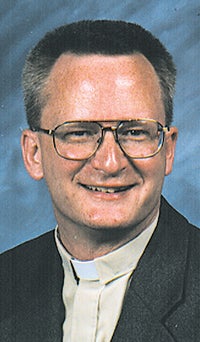All welcome to Communion feast
Published 9:48 am Friday, January 8, 2016
Across the Pastor’s Desk by Todd Walsh
I remember a sign I saw a number of years ago. It stood at the Peter and Paul Fortress in St. Petersburg, Russia. The fortress is a huge tourist site. And not all the tourists are Russian. The sign tried to convey the rules of behavior at the fortress. So it was done in the international symbols we are familiar with that mean to tell us, “Don’t do this.” We see them all the time for example with no parking signs.
But this sign was huge. There were a dozen different prohibitions. We were eating lunch near the sign, so we had some time to study it. It became a game in our group to figure out what we were being told we could not do. The first one was rather strange: “No public speaking.” And the list went on. No littering. No bicycles. No pets. No drinking (I presume alcohol). No skiing. No camp fires. No chopping down trees. No stealing. And the one that threw me for a loop: No jumping off the towers.
Then it dawned on me that this huge sign was not very inviting for guests. One of the first messages on entering this place was a chorus of “No!”
I wonder what would happen if at the doors of our churches that sort of sign were put up to greet people. We would be in trouble.
And I ask the question. Are there ways where we put up those sorts of signs in our churches? There may not be a big sign that has all these red circles with a diagonal bar across the symbol. But I do think we put up those signs in other ways. I think it is good for us to look at hospitality and invitation. Yes, that involves looking at the building and how outsiders view it. More important, that involves how we look at the people inside the church building and the kind of messages we ourselves are sending.
Let me change directions with this theme. Does God throw up this sign that says, “No?”
Well, lets start with the Ten Commandments. Only two of them do not have, “No.” Oops. Not much hospitality or welcome there. But then the commandments are given to guide, shape and protect the community and the individual. That’s definitely a positive goal.
Let’s take a look at baptism. Here we have a clear “yes” coming from God. Water cleanses. Water refreshes. Water renews. Water gives a new beginning and new life.
Consider the gift of baptism. Baptism emerged quickly in the early church as the entrance to the community of faith. It emerged at a time when other religions were saying, “No.” You had to be born into the right family. You had to be born into the right race. Your life was set the moment you were born and most people were out and would face “No!” for a lifetime.
But Christian baptism sent a different message. You are now a child of God. You are now part of a new family called, “God’s own people.” You are forgiven. And you can tap the forgiveness each day at any time. The message of baptism is “yes” in a world filled with “no.” Each day becomes a new beginning. And the final “no” of life that we call death is silenced. Yes, we will one day die. But our life now belongs to God, and when we die we will still belong to God. We have a home in heaven forever. We have the new beginning called eternal life.
Consider also the Sacrament of holy Communion, the sharing of the bread and wine. We have to start with the first group that received this meal, the disciples of Jesus himself. They were his followers. And they betrayed, denied and abandoned him. And still he invited them to the table and he fed them. He died for them and he rose for them. The disciples were a chorus of “No!” Jesus rose above it with his “Yes!” of the bread and wine and the cross and empty tomb.
Communion is a feast of “Yes!” All are welcome. All are fed. We are made ready to take down those signs with the red circle with the diagonal bar.
Todd Walsh is chaplain at Thorne Crest Retirement Community.


